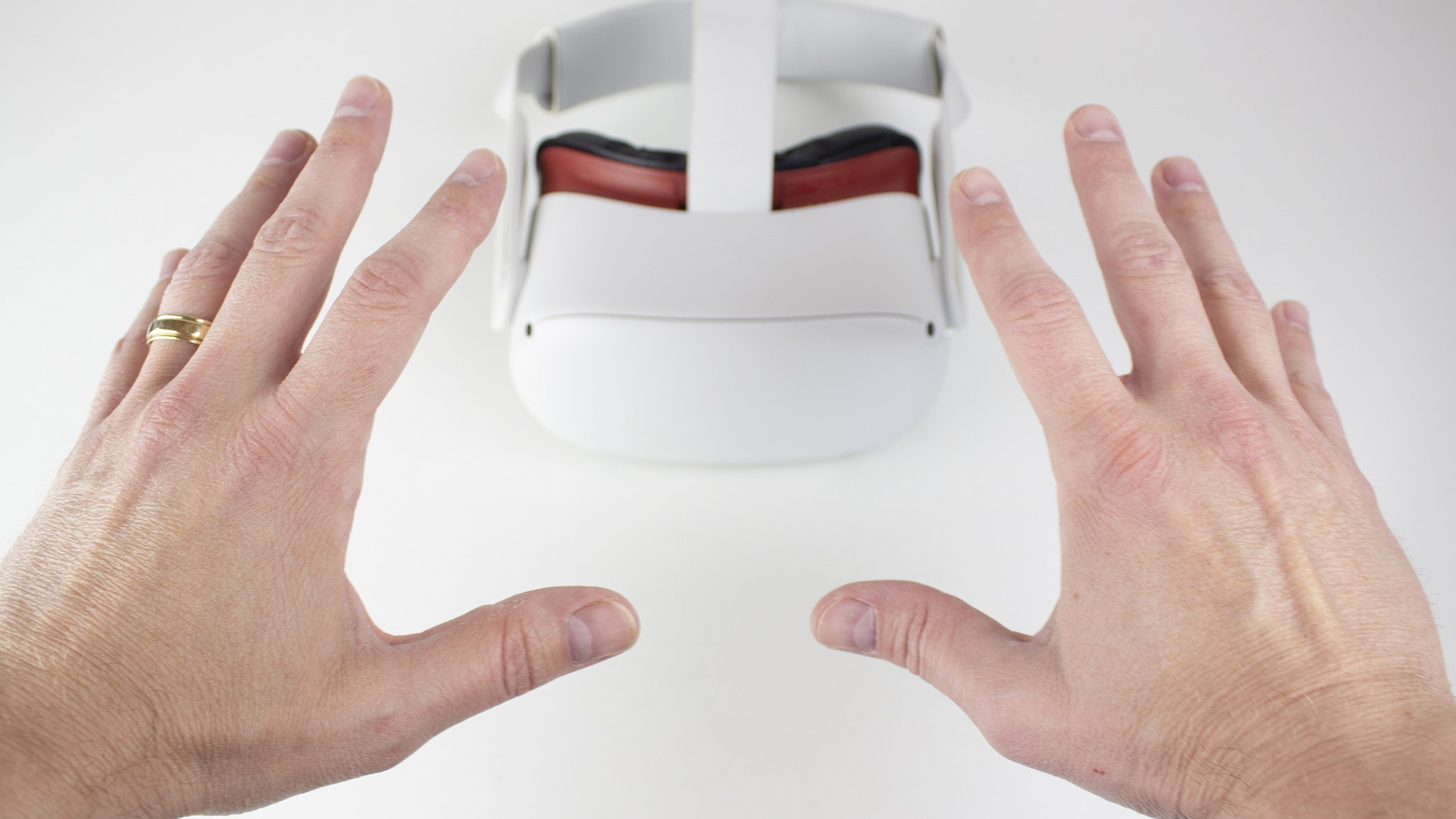Latest Quest 2 update seriously improves hand tracking, adds button remapping
Reduced hand tracking latency, Fast Motion Mode, and swipe typing all make it easier to set your Touch controllers down.

What you need to know
- The new Quest update enables Hand Tracking 2.2, which reduces latency between your real and virtual hands by 40%, or "75% during fast movement."
- This upgraded tracking enables "swipe to type," so you can move your finger across a virtual keyboard instead of tapping individual keys.
- In addition, the Quest 2 now has more accessibility features, including system-level live captions and a full button-remapping tool.
- The Quest update v56 officially began rolling out on July 20, but may take a few days to arrive on every headset.
Nearly three years after launch, Meta is still impressing us with how far it has optimized the Oculus Quest 2 hardware. The latest trick, courtesy of Quest update v56, is significantly reduced latency for hand tracking — especially for fast-moving or delicate applications like boxing or typing.
Specifically, Meta claims that the Quest 2 will be "up to 40%" better for typical use or "up to 75%" better for fast movement, once you receive the update. This should make your virtual hands more accurately match your real-world location, preventing mistimed actions or nausea.
The last v55 update gave the Quest 2 a 26% performance boost; it's highly likely that this extra processing power helps the VR headset track your motions with better accuracy than before, as well as software fixes behind the scenes.
You can see an example of this faster-paced hand tracking in Meta's video below, in a new App Lab tech demo called Move Fast. You can try the demo yourself to air box, block, and karate chop to the beat (similar to the gameplay of Supernatural), and see for yourself how much better the hand tracking feels.
Last year, Meta enabled Hand Tracking 2.0, which improved tracking continuity, gesture support, hand overlapping, clapping, and other common motions. Then version 2.1 reduced "tracking loss" and the "recovery time" it took to reestablish your hands' position if tracking was lost. Version 2.2 seems to be focused solely on raw speed.
With this update, we're hoping that the best hand-tracking Quest games will become even more enjoyable without using a controller.
In addition, the Quest v56 update adds the ability to "swipe to type using the virtual keyboard," rather than having to hen-and-peck whenever you're searching for something. You'll have to go into the Experimental Settings to enable this, however.
Get the latest news from Android Central, your trusted companion in the world of Android
Best of all, the Quest 2 now supports button remapping. Go to Settings > Accessibility > Mobility, and you can fully remap every button on either Oculus Touch controller, then create custom layouts you can save for later.
This could come in handy for "serious gamers" trying to climb the leaderboards in certain games, but it can also serve as a useful accessibility tool for "people with dexterity challenges," as Meta put it.
One other welcome accessibility addition: the Quest 2 now supports Live Captions at the System Level, specifically for the Meta Quest TV, Explore, and Meta Quest Store, with more apps to come.
We're glad that when the Quest 3 launches later this year, it'll benefit from all of the methodical upgrades that the Quest 2 has added since 2020. We expect it to have upgraded tracking cameras on par with the Quest Pro, as well as a faster processor; this should help the hand-tracking realism improve even further from what the Quest 2 can offer.

Now that the Quest 2 price has dipped back down to $299, it's a tempting option for people who don't want to wait for the pricier Quest 3 to arrive. It's faster and better for gaming than ever, thanks to the latest updates.

Michael is Android Central's resident expert on wearables and fitness. Before joining Android Central, he freelanced for years at Techradar, Wareable, Windows Central, and Digital Trends. Channeling his love of running, he established himself as an expert on fitness watches, testing and reviewing models from Garmin, Fitbit, Samsung, Apple, COROS, Polar, Amazfit, Suunto, and more.
